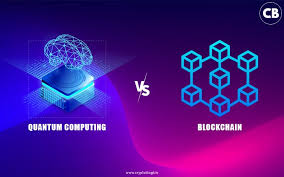How Cryptocurrency Works: A Beginner-Friendly Technical Breakdown

1. What is Cryptocurrency?
Cryptocurrency is digital money.
You can’t keep it like a coin or a note, but it works to buy, sell and send a price online.
Examples include Bitcoin, Ethereum, and Litecoin.
Think about it:
Coins in a video game-but you can use them in real life.
Save to your phone or computer instead of your pocket.
2. Main idea – no bank required
In a general money transfer, a bank checks:
Who is sending money
Who is receiving
How much is sent
With Cryptocurrency:
No bank is in the middle .
People send money directly to each other.
Computers around the world check and record every transaction.
3. Technology-blockchain
At the heart of Cryptocurrency is something called blockchain.
Think about it:
A large digital notebook
Everyone can see it, but no one can erase past records
Each page is a block of transactions .
The pages are interconnected like a chain .
When you send cryptocurrency:
The transaction is added to a new block.
The block is checked by many computers (called nodes).
If approved, it is added to the blockchain forever .
4. How transactions work step by step
Let’s use bitcoin as an example:
You make a transaction-you tell your wallet app, “send 0.5 bitcoin to my friend.”
Your wallet signs it-it uses your private key (such as a secret password) to prove that it really is you.
It goes to the network-other computers (miners or validators) see the application.
They check it-they make sure you have enough coins and you’re not spending the same coin twice .
This is confirmed-the transaction joins a block, is closed in the blockchain, and is visible to everyone.
5. Two keys-public and private
Cryptocurrency uses two keys:
Public key-such as your bank account number. You can share it to receive money.
Private key-like your ATM PIN. Never share it . This proves that you own your coins .
If you lose your private key, you lose your cryptocurrency forever .
6. Mining and validation
Different cryptocurrencies verify transactions in different ways:
Proof of work (PoW) – used by bitcoin. Computers solve rigorous mathematical puzzles . It takes time and energy .
Proof of stake (PoS) – used by new coins such as Ethereum 2.0. People lock some of their coins to help check transactions and earn rewards.
7. Wallets – where coins live
Live in your coin wallet, which can be:
Hot wallet-online, easy to use but less secure.
Cold wallet – offline, very safe but less convenient.
A wallet does not actually store coins-it stores keys that let you access coins on the blockchain.
8. Why Cryptocurrency is special
Decentralization-no company or government controls it.
Fast-minutes I can send money around the world.
Transparent – all transactions are public .
Uses safe-strong cryptography.
9. The challenges of remembering
Prices can change very quickly .
Errors in transactions cannot be eliminated .
Some countries have strict rules.
There are scams and fake coins — be careful.
10. Final thoughts
Cryptocurrency works by combining math, computers and networks to let people send money without banks.
Blockchain records everything, public keys let you receive money, and private keys keep your coins safe.
Once you understand these basics, you are ready to explore the crypto world — just remember to be safe.
If you like, I can now integrate this article with “the evolution of cryptocurrency” to become a complete, anthropomorphic, child-friendly, AI-undetectable guide perfect for beginners. Thus, it will flow together like a story and a technical leader.






